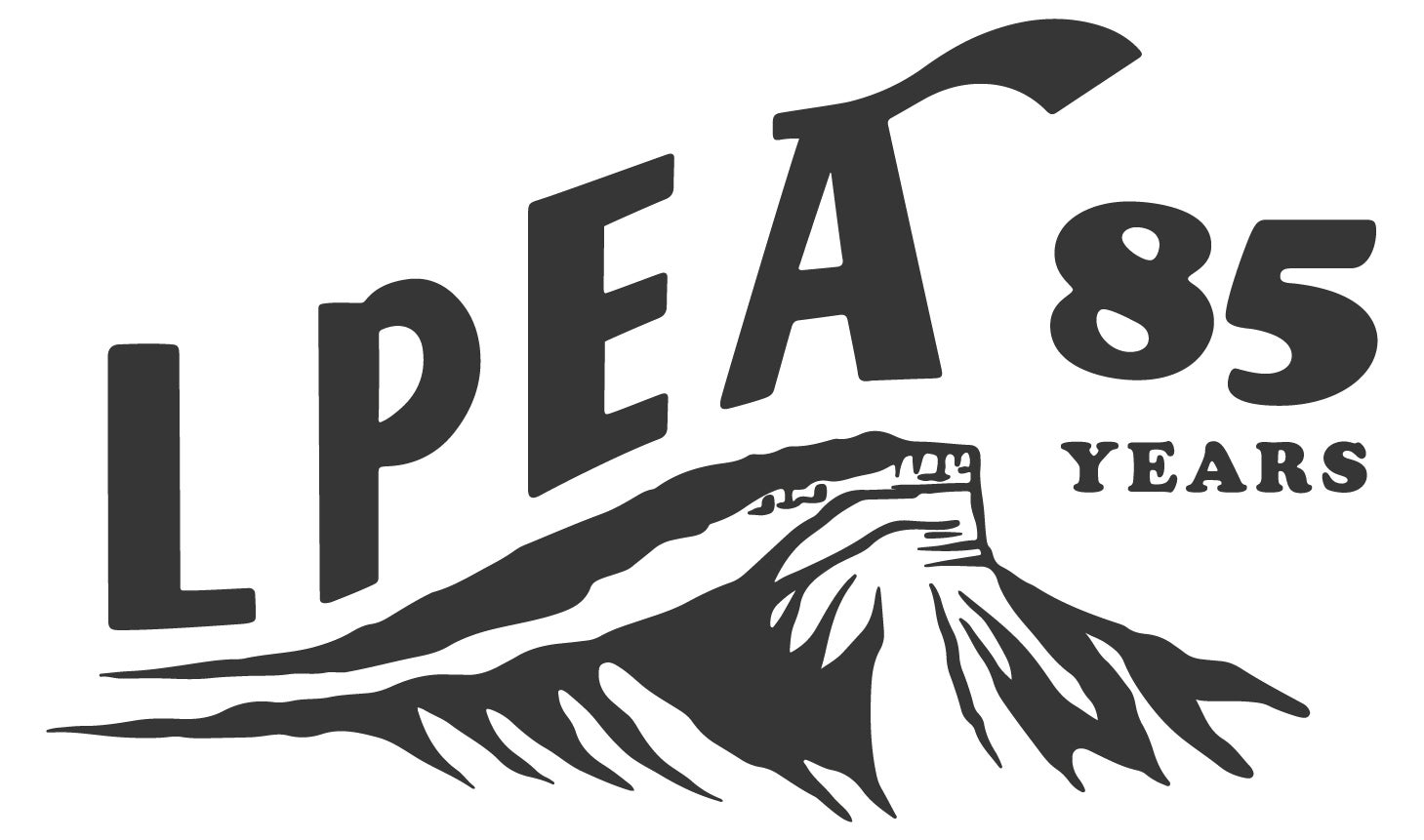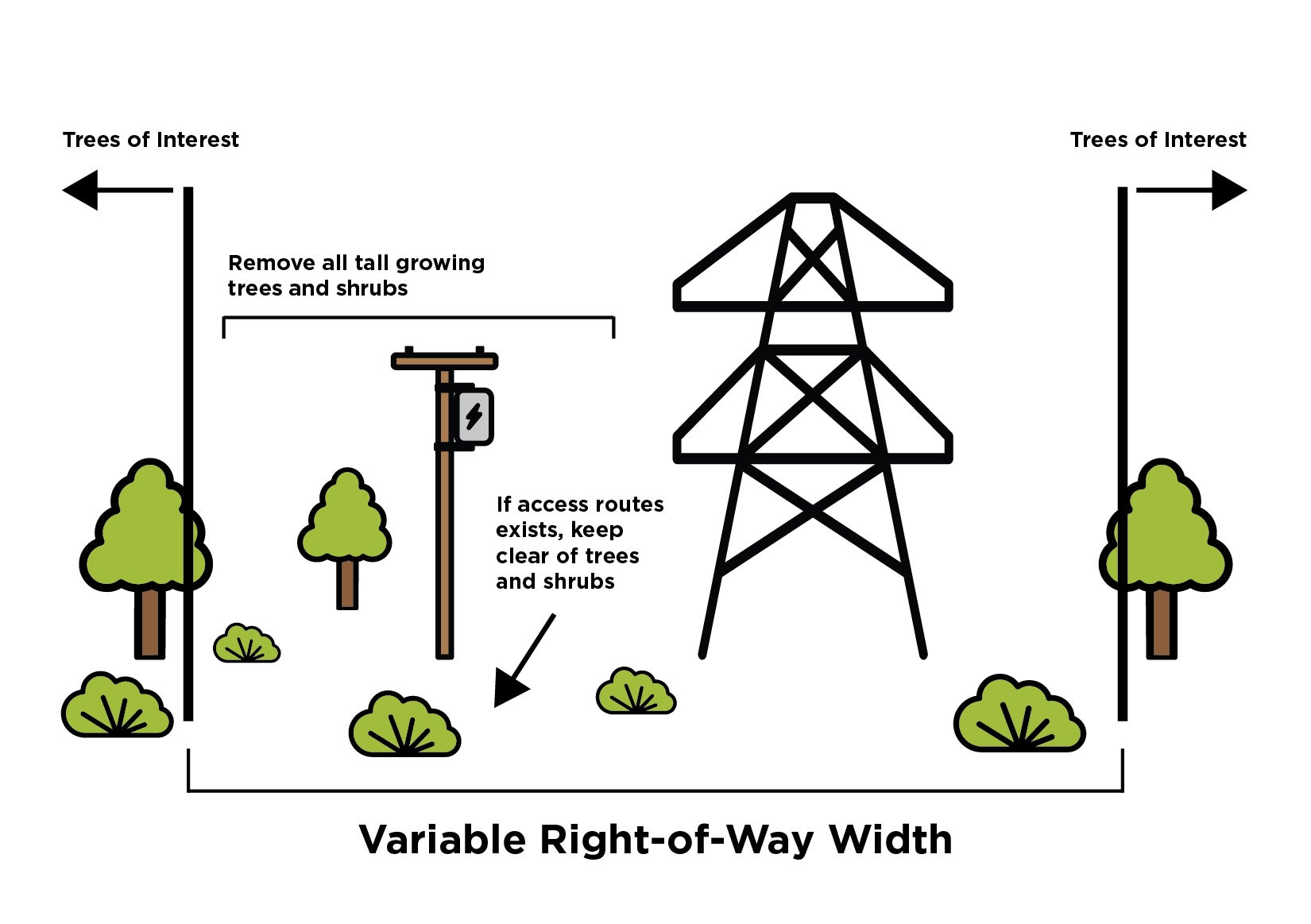LPEA uses vegetation management to help prevent outages and wildfires
Wildfires remain a threat here in Soutwest Colorado, and we keep vegetation management as a top priority. Overgrown trees and other vegetation can interfere with power lines and equipment, causing outages, fires, and other safety hazards. We regularly inspect, trim, and remove trees and other vegetation that could interfere with our power lines to reduce these risks.
If we plan to conduct work in your area, we’ll send you a text in advance. You can also visit our neighborhood projects page to see a map of all the active work in LPEA’s service territory.
Keeping your power lines clear
Trees beautify our communities, provide habitat for wildlife, offer shade, and help keep our environment clean. But trees that grow too close to or into LPEA's powerlines can result in power outages, wildfires, and safety risks.
For a map of current LPEA tree trimming work, click here.
Why does LPEA trim and remove trees?
-
Safety: Trees are excellent conductors of electricity. When they grow into powerlines or even just too close, it presents a major safety hazard. Electricity can travel through the tree and severely injure or kill individuals working or playing on or near the tree.
-
Reliability: Maintaining a proper clearance of at least 15-25 feet between our powerlines and trees minimizes the impact trees have on your electric service. This clearance space helps prevent wind, snow, and ice from breaking tree limbs and sending them into the powerlines.
-
Fire Mitigation: Maintaining proper clearance also decreases the risk of wildfires. When trees come in contact with our lines, they can catch fire.
-
Affordability: By maintaining clear rights-of-way around our powerlines, we prevent the need to repair and replace powerlines, poles, and other equipment that may have been damaged by trees during storms.
How does LPEA trim and remove trees?
Our priority is to remove trees that are within our power line rights-of-way (ROW) on our primary power lines because these lines carry high-voltage electricty to our local communities and require special care and handling. Primary powerlines are the lines you see running from pole to pole on our system.
In some cases, these lines cross private property. While LPEA has the authority to remove trees located within our ROW on private property, we understand this can be frustrating for homeowners. Our main concern is safety for you and for our employees. Tree trimming greatly increases both the safety and reliability of the electrical system and is a necessary maintenance procedure.
LPEA is not responsible for trimming or removing trees along the service lines running from our poles to your home.
The service line carrying power from our system to the meter on the side of your home has the least impact on power outages. As such, LPEA does not maintain vegetation clearances along these lines or along joint-use wires such as telephone and cable lines.
It is the homeowner's responsibility to trim trees and vegetation along these lines. Always hire a qualified and licensed professional tree trimmer to perform any work along your service lines. You may also request a temporary disconnect, and we will de-energize your service so your contractor can safely trim back your trees.
How can you help?
You can help us keep our power lines clear of trees by following better practices when you plant trees. With lifespans ranging from 50 to 5,000 years, you’ll want to plant your tree in a place where it can flourish long-term, not under power lines.
-
Don’t plant trees within 25 feet of LPEA’s power lines.
-
Only shrubs or small trees (growing less than 20 feet high) should be planted within 25 feet of power lines.
-
Don’t plant any vegetation around LPEA ground equipment, such as poles, transformers, or junction boxes.
-
Call 811 before you dig to locate any buried utility lines.
-
Report any trees growing into power lines or other LPEA equipment immediately to 970-247-5786.
-
Never trim these trees yourself.
-
We highly recommend that you contact a tree professional to assess any tree trimming needs on your property. They can then contact LPEA at (970) 247-5786 when action is needed. If damage to LPEA infrastructure is caused by the private felling or trimming of trees, the member is responsible for repair costs.
-
Clear your own brush – The Wildfire Adapted Partnership’s 2025 Chipper Rebate Program will open in the Spring. Learn more at https://www.wildfireadapted.org/chipper-rebate
-
Assess your risk – The Wildfire Adapted Partnership also offers a Home Wildfire Site Visit, to determine your property’s wildfire risk, and to propose mitigative efforts. More: wildfireadapted.org


